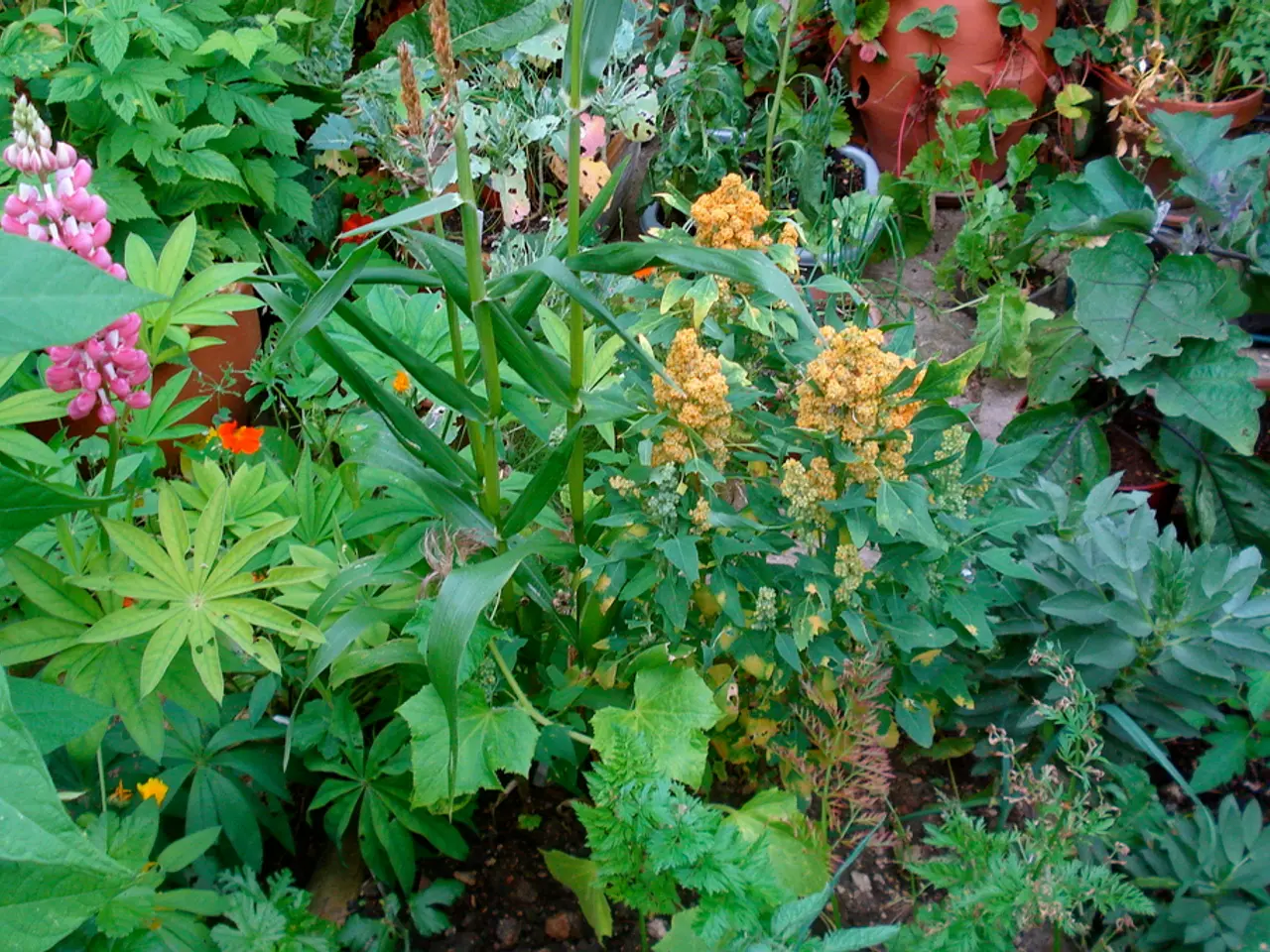Gardening Adventure in the Backyard
In a suburban lot, two garden enthusiasts are embarking on an exciting new journey, aiming to create a thriving and sustainable garden. With five years of gardening experience under their belts, they are eager to share their knowledge and the progress of their garden with readers.
The property they have chosen boasts a good south exposure, large square footage, recreation space, a shed, greenhouse, compost bins, and established gardens – all essential elements for a successful urban garden.
The authors are incorporating elements of permaculture into their garden planning, focusing on creating a self-sustaining ecosystem that promotes biodiversity and reduces the need for external inputs.
This year, they are expanding their garden and planning to put up their greenhouse that has been in pieces for two years. The most successful crops in their garden so far have been zucchini, tomatoes, blueberries, strawberries, raspberries, peas, field cucumbers, beans, and lettuce. For the new garden bed, they will be planting brussels sprouts, kale, arugula, and carrots.
To plan for sustainable home gardening in these zones, the authors recommend utilising crop rotation and companion planting to improve soil health and reduce pests. They also suggest growing drought-tolerant or low-water-use vegetables like certain beans or root crops to conserve water in urban settings. Employing organic mulching and composting to enrich soil fertility sustainably is another key practice. Incorporating perennial herbs and vegetables where possible can reduce replanting efforts.
Success in their garden is defined as crops that are easy to grow, care for, and produce a plentiful quantity relative to the effort and space required. To achieve this, they employ several strategies, including succession planting to stagger harvests for a continuous supply and monitoring for warm spells that may cause some crops to bolt (flower prematurely) and providing shade or protection when necessary.
The authors are also mindful of local climate fluctuations, focusing on cool-season crops planted in late summer and fall with attention to succession planting and frost timing. Some quick-maturing crops suitable for last-minute summer planting include bush beans, radishes, and beets, which can mature within 30 to 60 days before the first frost, maximising the season.
The authors are hoping for a year-round harvest and increased production on their suburban lot. As they work towards this goal, they will be sharing regular updates on the garden progress and are open to subscriptions for updates on this and other topics. They encourage readers to check back often for updates and offer sharing options for Facebook, X, Pinterest, LinkedIn, Tumblr, Reddit, WhatsApp, Email, Telegram, Threads, and Bluesky.
The authors' motivation for gardening includes saving money, knowing what treatments are used, sustainability, and self-reliance. They have faced challenges, such as trouble with coddling moths in their apple trees, and will be experimenting with organic treatments to control the population.
References:
[1] https://extension.umd.edu/hgic/plants/vegetable-gardening-zone-7 [2] https://extension.umd.edu/hgic/plants/vegetable-gardening-zone-8 [3] https://extension.umd.edu/hgic/plants/gardening-urban-areas [4] https://extension.umd.edu/hgic/plants/vegetable-gardening-seasons-and-timeframes [5] https://extension.umd.edu/hgic/plants/sustainable-gardening-techniques
- In line with their commitment to sustainability and organic gardening, the authors plan to plant brussels sprouts, kale, arugula, and carrots in the new garden bed, following advice from the University of Maryland Extension on sustainable gardening techniques.
- To maximize the season and maintain a successful garden, the authors are focusing on quick-maturing crops like bush beans, radishes, and beets that can mature within 30 to 60 days before the first frost, as recommended by the University of Maryland Extension for gardening in urban areas.
- Emulating the principles of permaculture, the authors are striving to create a self-sustaining ecosystem in their garden by implementing practices such as crop rotation, companion planting, organic mulching, composting, and growing perennial herbs and vegetables, as suggested by the University of Maryland Extension for sustainable gardening.




